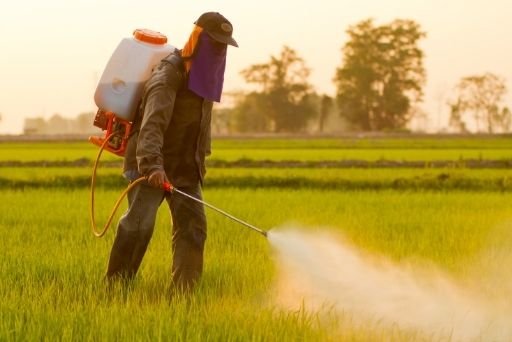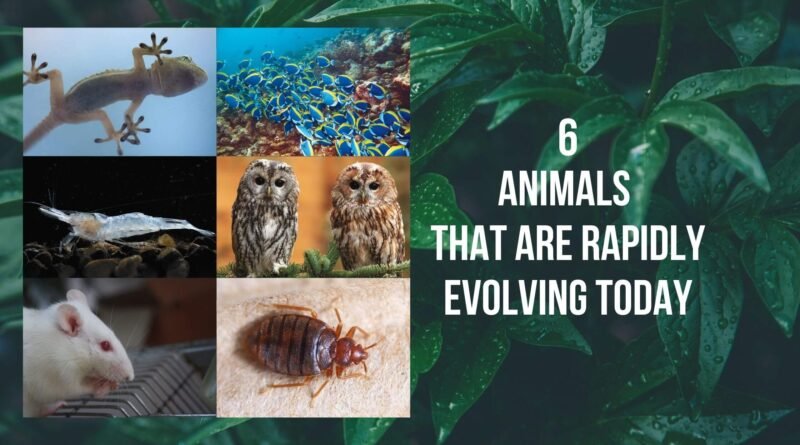6 Animals that are rapidly evolving today
When we assume evolution, we think of the past. That is because man has a habit of associating development with the history of the world. The truth is an evolution in the past, present and future. It never stops occurring or remaining in continuity. Similarly, many animals on this planet never stopped evolving. This indicates that they are still growing, and many continue to do so for a few decades. So, what are these animals? How do they look when they evolve? What changes have they undergone so far? If you are scouting for the answer to all these questions, you have come to the right place.
Here are six fascinating animals that are rapidly evolving today. Let us look at them!

- Owls are changing their color
The Tawny Owl in Finland comes in brown and pale grey colours. But due to climate change, their colour is slowly changing. Although the chilly winters are a boon for these owls as they hide in snow-capped mountains with their grey body, the predators cannot attack them. However, winters are becoming mild now, and the snow is disappearing. With that, grey owls are also disappearing. Although the brown owls are there, the climate pressure forces them to make vivid changes now and then.

- Fishes are migrating earlier
The Pink Salmon is also showing several behavioural changes as they are migrating earlier. As the water temperature is growing, fishes are leaving the original waters for spawning two weeks earlier. This was more prevalent in them around 40 years ago. But sources say that this is also a behavioural change on many genetic levels. So, we can see that the fish are trying hard to make their lives easier and beat the problems of climate change. As such, they are trying to adapt to the conditions and make some changes for the betterment.

- Mouses are immune to poison
If you hate mice, here’s some bad news to make matters worse- Recent research has started to showcase that mice may have the potential to carry Poison that comes in the form of Warfarin. First, these mice were discovered in Germany, and this genetic mutation seems to be petrifying for many household members. Although this type of hybrid mouse may not be able to reproduce, it might potentially do it on rare occasions. As such, there are chances of it spreading. It can prevent infestations.

- Bedbugs have super-strength
We consistently underestimated the power of bedbugs. We thought that coming up with a few exciting strategies to prevent bed bugs could save us from potentially harming our skin at night. Little did we know, that would backfire. Now, bed bugs have thicker shells and nerve cells of steel. As such, they have the power to resist many types of problematic chemicals for a more extended period. That is why the latest news suggests that bedbugs have now grown 250 times more resistant to pesticides. No wonder people have started fearing the idea of having bed bugs and sleeping on them.

- Shrimps lost its eyes
We already know that many sea animals live deep inside the waters, which blinds them to light. Since there is no lighting so deep inside the waters, they can hardly make the most of their sight to see things. That is why they recently turned blind, and they rely entirely on their navigational skills to prey and eat food. They also rely on their sensory skills for the same. When compared to their land-dwelling relatives, it was found that these shrimps are also losing their brains now. However, their potential to touch and smell things is getting better by the day. A recent study also shows that it is the product of nearly 200 million years that the shrimp’s brain has undergone this change. It is a gradual process for sure.

- Lizards with extra sticky feet
You may have found the native green lizards living on the branches of several trees and trunks of Florida. But recently had to move from there because their brown relatives have started to occupy their original space. As such, the resources have been limited for them, and the competition has also increased. That is why the green lizard’s bodies were forced to adapt to many environmental changes for survival. As such, their limbs have now become thinner and smoother. However, recent sources suggest that it is quite a shock that these creatures have been able to change so rapidly.
“The degree and fastness with which they evolved were surprising,” said Yoel Stuart, The University of Texas at Austin and lead author of the study. “If human height were experiencing evolution as quickly as these lizards’ toes, the height of an average American man would improve from about 5 foot 9 inches at present to about 6 foot 4 inches in nearly 20 generations.”




